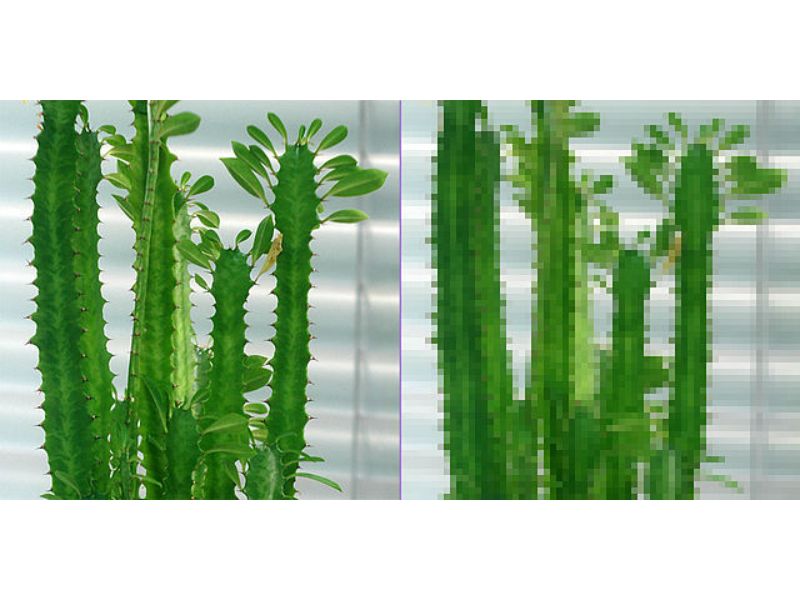
Image compression is an essential tool for any designer who works in print, tv and film, or on the web. Knowledge of image compression, including how and why it works, is imperative.
If you’re hiring a graphic designer, they will most likely know a great deal about this. But, if you’re just starting out, you’re going to want to brush up on your knowledge.
What is image compression?
Image compression is an application of data compression that encodes the original image with a few bits. The objective of image compression is to reduce the redundancy of the image and to store or transmit data in an efficient form. – An Introduction to Image Compression

In essence, it’s when you remove or group together certain parts of an image file. This reduces the size, optimizing it for quick and easy use. Image compression is at work any time you visit a website, send an email, or send large files.
Navigating the web would be a much more tedious process without the use of image compression.
[in_content_ads gallery=”logos” logo=”on” title=”Need graphic design help?” subtitle=”Try Penji’s Unlimited Graphic Design and get all your branding, digital, print, and UXUI designs done in one place.” btntext=”Learn More” btnlink=”https://penji.co”]
Why do we use image compression?
- For website optimization. Sites with uncompressed images can take longer to load, and can cause your visitors to leave your webpage.
- For sending and uploading images. Uploading an uncompressed image can take a while, and some email servers have a file size limit.
- The files become smaller, so the storage impact on your hard drive is less.
How do we compress an image?
Modern design tools come prepackaged with complex algorithms that carry the weight of the decision-making process. However, a general understanding of how and why images are compressed will ensure that your work is consistently accurate and presentable.
There are two basic methods of compressing files: lossy and lossless.

Lossy Files
Lossy files will save space by discarding some parts of the photo. The two main types of lossy files, as it relates to photos, are JPG and GIF. If you’ve heard of these file types before (and you no doubt have) and don’t know what they indicate:
JPG, or JPEG, gets rid of bits and pieces of a photo. Depending upon the degree of compression, the degradation of the photo may not be terribly noticeable. More compression means lower quality.
GIF files compress images by reducing the number of total colors they have. GIFS are limited to 8 bits per pixel, reducing the total number of colors in the photo to 256.
Lossless Files
Lossless files reduce the size of a file without sacrificing its quality but the tradeoff is the immense size of the file can make storage difficult. Types of lossy files include RAW and PNG.
RAW files are found in many DSLRs. They retain the light data received from the camera’s sensor. This is helpful for professional photographers, but the files tend to be quite large in size.
PNG files compress images by looking for patterns and pursing them together. Compression is reversible with this file type, so once you open a PNG file, the image recovers exactly.
Methods of compression
The following methods are used by tools and services that compress images and utilize algorithms to achieve lossy or lossless compression.
Deflate is a lossless data compression algorithm used in PNG images. It uses a combination of Huffman and LZ77 coding. This achieves compression without affecting the quality of the image.
Run-length is a lossless compression method that takes redundant strings or runs of data and stores them as one unit. This makes the files smaller and simpler without altering the date.
Transform encoding is a lossy method of compression most commonly used in JPGs. Transform encoding takes colors with similar shades and turns them into one single value. The change in image quality is dependent upon the compression value.
This guide presents a general understanding of the process of image compression. There are a lot of moving parts, but taking compression into account will contribute to positive results at the print shop.











